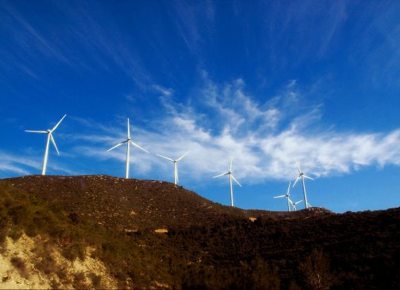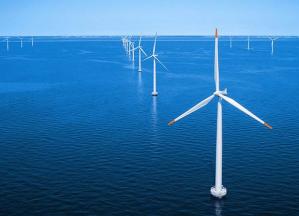 The U.S. government is pushing for large-scale wind power development and the timing may be just right.
The U.S. government is pushing for large-scale wind power development and the timing may be just right.
A recent study from Bloomberg New Energy Finance says that costs for electricity generated by onshore wind are now on par with costs for coal-generated power in the United States and several other markets. That could speed up development of renewables at a time when the world seeks cleaner sources of energy.
President Obama has called for 80 percent of U.S. energy to come from sources that produce little or no greenhouse gas emissions by 2035, a goal that will require increases in wind, solar, hydro and other “green” power sources. The United States gets about 11 percent of its electricity from renewable sources today.
WIND BLOWS IN THE RIGHT DIRECTION
Electricity from plants fueled by natural gas still costs significantly less — $56 per megawatt-hour, Bloomberg reported.
“For the past few years, wind turbine costs went up due to rising demand around the world and the increasing price of steel,” said Michael Liebreich, chief executive of Bloomberg New Energy Finance. “Behind the scenes, wind manufacturers were reducing their costs, and now we are seeing just how cheap wind energy can be when overcapacity in the supply chain works its way through to developers.”
 U.S. PUTS OFFSHORE WIND ON FAST TRACK
U.S. PUTS OFFSHORE WIND ON FAST TRACK
Even though turbines at sea are more expensive. Theyhave less of an environmental impact than those on land and they can generate much more electricity.
In 2010, the United States cleared the way for the first large-scale offshore wind project off the coast of Massachusetts. The government also recently gave a $1.3 billion loan guarantee for development of the world’s largest wind farm to be located on the Pacific coast in Oregon.
The government hopes to deploy 10 gigawatts of offshore wind energy capacity by 2020, and 54 gigawatts by 2050. Millions of homes could get their power from wind that way.
Although the rate of growth in U.S. wind installations slowed in 2010, the industry continues to expand. This is largely thanks to a federal tax credit that makes renewable energy more competitive with coal and other fossil-fuel sources, which long have enjoyed federal subsidies.
Thirty-seven states now have commercial wind stations within their borders, the American Wind Energy Association reported recently. Iowa, with 20 percent of its power coming from wind, leads the pack.
In the last five years, 400 manufacturing plants have been built or expanded to produce wind energy equipment, said AWEA Executive Director Denise Bode “We’re going to be making a whole lot more affordable, homegrown electric power in the years to come,” she said.
(Source: Bureau of International Information Programs, U.S. Department of State, www.america.gov)



















